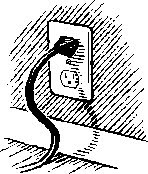Sunday's (9/27/09) New York Times (Sunday Business) - Solar Power, Without All those Panels is a very interesting advance in the use of photovoltaic cells and one I would like to see more use of. It seems to me that the use of solar power as a distributed generation alternative, rather than a central station alternative, is best use and best practices.
Home builders are including "building integrated photovoltaics" in roof tiles that will generate power directly into the home. The article provides an example of one product, installed in a California home, that will generate 2,400 kilowatt-hours per year for about 300 square feet of roofing tiles that contain photovoltaic cells. If you use about 1000 kilowatt-hours per month, this will reduce your consumption of central station power by 20%. That is a huge reduction in consumption and, if universally applied, would reduce the need for new power plants and transmission lines in the U.S. very significantly. It might also shift some of our electricity consumption from central station power plants from periods of peak consumption into off-peak periods because the solar roofs would be generating power when we need it most: at the peak time of day when the sun is shining, hottest temperatures and peak air conditioning consumption.
This fits very well with the concept I propose in my book (How to Tell a BTU from a BLT): Conservation Without Deprivation!
Subscribe to:
Post Comments (Atom)




You've persuaded me that 20% savings per household is worth the investment for both the government, through subsidies for installation, and the individual as conservation.
ReplyDeleteI am curious about the upfront cost of installing photovoltaic cells in the roof. Sounds like it could be worth it in the long run.
ReplyDelete